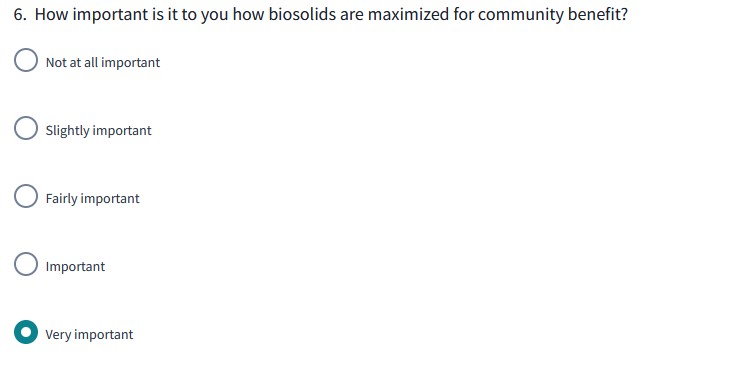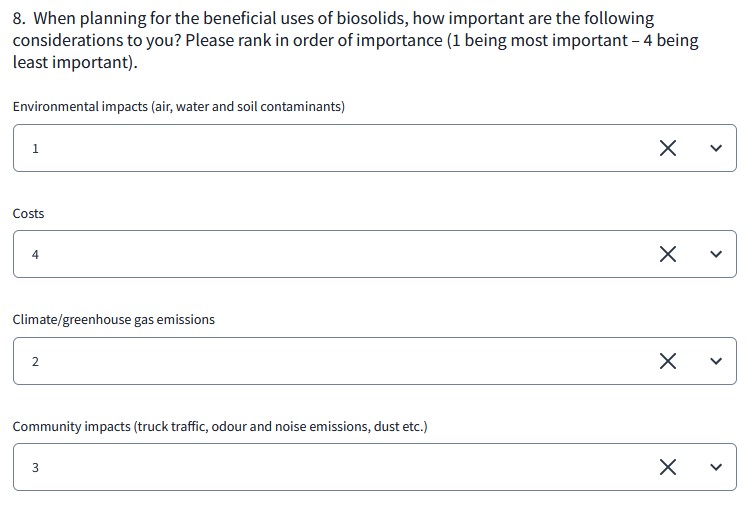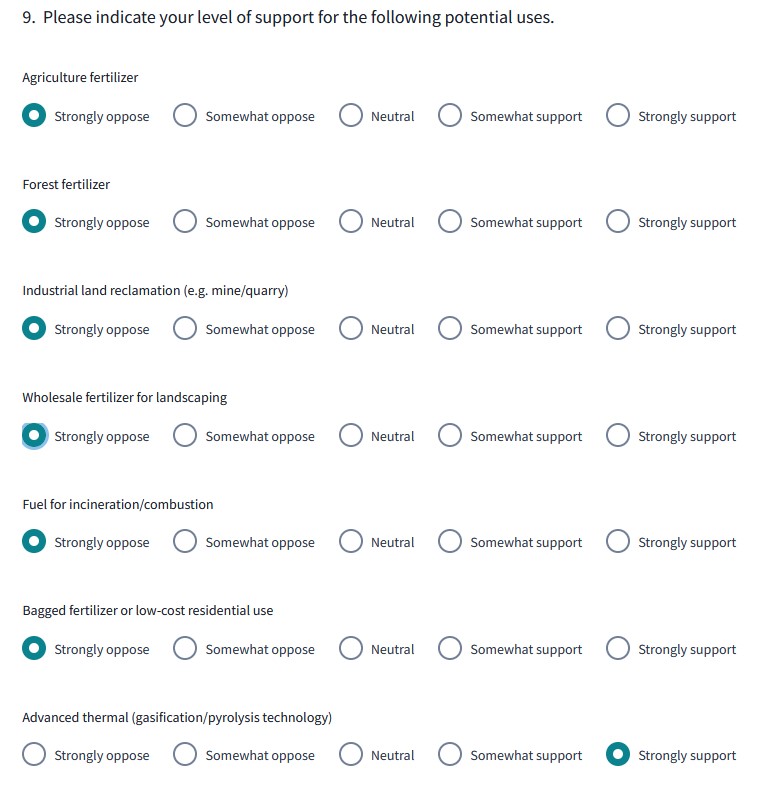Would you knowingly eat food, drink water or breathe air that contains toxic chemicals and microplastics linked to cancer that are contained in sewage sludge from Victoria, BC’s wastewater treatment plant?
Right now, forever chemicals, which true to their name last nearly forever in our environment, such as PFAS, and microplastics as well as PAHs, lead, mercury, dioxins, and pharmaceuticals are making their way into our air, water and soil through the bio-accumulation of tons of these toxic chemicals that remain in the sludge after the waste water from our homes, industry, businesses and health care facilities is processed.
Since 2022, the CRD plan was to use these dried biosolids as an alternative to fossil fuels in a cement plant, which is in keeping with a ban on the land application of biosolids the CRD Board passed in 2011. Instead, every day, 10 tons of toxic sludge, also known as “biosolids,” has been spread or buried at Victoria’s Hartland Landfill, where wind and rain erosion disperses these forever chemicals into the neighbouring farms, fields, forests and watersheds.
The CRD is giving the public until March 6th to do an important biosolids survey. Many people have reported the wording is confusing and/or they don’t know enough about the subject to respond. Creatively United has provided a quick and easy way to be informed and take the survey.
We have taken this opportunity to share the responses we feel are the best approach for the CRD to take in light of the seriousness of the toxicity found in biosolids and the need to expedite a demonstration thermal conversion plant, using the most current technology, as the most viable, long-term and healthy solution available.
There is a strong triple bottom line business case for thermal conversion which the CRD needs to employ as it:
- creates a non-toxic biochar which is the desired end product as a result of thermally converting toxic biosolids into inert biochar – a new green industry;
- it’s a carbon free fuel source, not incineration, no pollution, low carbon footprint;
- a plant could be up and running within two years if treated as the emergency this is;
- thermal conversion can stop landfill expansion and convert ALL waste, not just biosolids, into fossil fuel free energy and save our waters, soil, trees, fish, our health and the beauty of the region and why so many people chose to live and visit here. Solutions exist! Read more about biosolids here.
Deadline March 6th, 2024
Questions 1-5 are for your personal data, but for question 6 onwards we have prepared the following responses to help guide you through the survey:


Please note that the responses to question 8 can appear in a different order





![]()


For more information on biosolids, visit:
Biosolid Free BC on Facebook
Mount Work Coalition
Raincoast Conservation Foundation
Sierra Club

I strongly oppose the lifting or reversal of the ban (2011) on the land application of biosolids in B.C.
No fossil fuels whatsoever must be used to deal with the processing of biosolids.
This is a very helpful guide to answering the CRD survey,which is clearly designed to push the answerer towards supporting bio solids use. Thanks, Frances
Thank you for clarifying and caring.
Thank you Frances for guiding us and helping to keep the biosolids issue in the public eye. You are invaluable!
Thank you for educating me on this and drawing the survey to my attention. I understand that conversion to biochar eliminates all toxins but I am very curious as to how this happens. Where do the toxins go or what do they become?
Hi Jane,
The toxins are first pulled apart in the high temperature gasifier chamber (600˚C) and mix with (become part of) the syngas which passes directly into the highly efficient thermal oxidizer where it is completely destroyed at very high temperatures (1200˚C).
The biochar, on the other hand, will be retained in the gasifier until they are all converted into pure crystalline carbon (biochar). The syngas is then, as noted above, completely destroyed and turned into harmless compounds and ash, and filtered before released into the atmosphere (to catch the ash particles).
So yes, the short answer is that they will all be completely destroyed in the overall process.
Best,
Graeme Bethell MSc QEP
Pivotal IRM Inc.
I would like to see thermally converting toxic biosolids into inert biochar – a new green industry!
What are the downsides to using your solution?……..sounds like it’s highly energy intensive.
I completely agree that bio solids must not be applied in areas exposed to any kind of weather. Very important to build a biochar facility, safest way to deal with this dreadful bi product.
Thank you for this information. I support non-toxic bio-char.
I support the non-toxic bio-char.
I support bio-char.
Thank you for eloquent rebuttal to the confusing survey. Biochar method is the best method, built and active, the sooner the better.
I understand biochar results in lowered organic pollution but wouldn’t metals build up nd be much higher in biochar because they are elemental?
I strongly support use of a thermal gasifier to dispose of biosolids, but also
garden wastes, kitchen wastes, plastics, and some materials from deconstruction
projects, i.e. from buildings.
Thank you!
I suggest ticking all the ways to be kept informed. I Leo added town hall meetings. This is an opportunity for community education.
Definitely no use as fertilizer or landfill. What are the bureaucrats thinking about? There are so many problems with this this approach that no one should even be considering it.
I received some sludge many years ago & it was the worst thing I could have done to my garden. Advanced thermal processing sounds good but what are the down sides?
Please get the demonstration bio chat
Thermal thing that the CRD
promised it would set up in 2023 ( I think it was), and end the land application of bio solids from being applied to the Hartland Dimp.
Thank you
First, we need to understand the toxins in biosolids before talking about turning them into something unknown. It is a crazy idea to turn biosolids into biochar since pyrolysis/gasification is energy-intensive, and biosolids must be dried before processing. The whole process is energy-negative no matter what fuels you recover. Also, a Nature article pointed out that there was still no scientific proof of the benefits of biochar in soil or climate change (https://www.nature.com/articles/s41578-023-00634-1). So, the market of thermal products is not established. Plus, heavy metals are accumulated in biochar with some recalcitrant organic compounds. No one can guarantee that biochar is non-toxic in the long term. Why waste energy and turn natural biosolids into synthetic unknown matters?